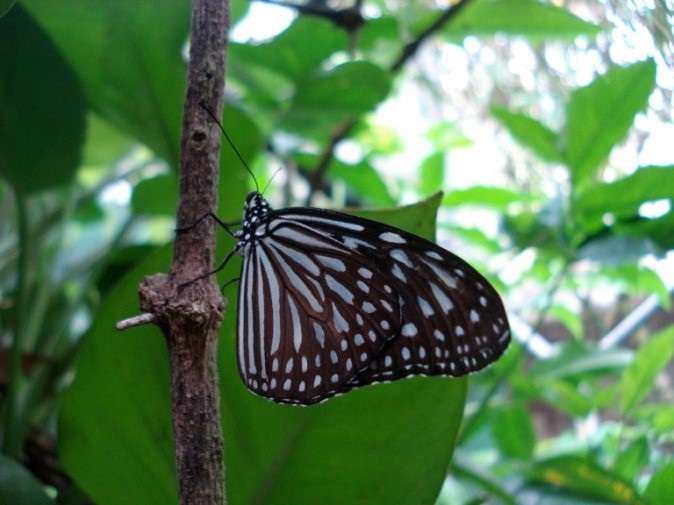Can butterflies cope with city life? Butterfly diversity in Kuala Lumpur parks

Researchers from the University of Malaya, Malaysia, have documented 60 species of butterflies in Kuala Lumpur city parks. They found that wild areas within parks are particularly popular with butterflies and should be maximized to encourage butterfly diversity. The study was published recently in the journal Urban Ecosystems.
City parks are used for jogging, picnicking, even as scenic venues for wedding photoshoots, and serve as green lungs, providing fresh air for the urban community. But these parks are also important for local wildlife, providing refuges for animals which need green spaces to survive.
Since 1990, the Federal Territory of Kuala Lumpur has seen an 87% loss in green land, a 77% increase in the human population, and rapid urban sprawl across the outlying Klang Valley. Considering that KL is located at the heart of the highly-threatened biodiversity hotspot of Southeast Asia, understanding the biodiversity of city parks is critical, but has received little attention.
Butterflies react rapidly to environmental change due to their short lifecycle and high mobility. An estimated 20%-40% of the butterfly species of Southeast Asia are threatened with extinction due to urbanisation and deforestation across the region. To understand how well KL city parks can function as refuges for butterflies, a group of scientists led by Dr. John-James Wilson from the University of Malaya surveyed butterflies at ten parks across KL. The study also examined the effects of park age and park size on butterfly diversity.
More than 1,000 species of butterflies are found in Peninsular Malaysia but only 60 species were recorded across KL parks. Almost all the butterflies recorded were widely distributed, common, species suggesting that species with broad geographical distributions are more likely to survive in cities. The lack of rare species in KL parks, which is similar to findings from Singapore and Hong Kong, indicates tropical city parks are poor substitutes to natural habitat for maintaining populations of rare butterflies.
The study also discovered that more butterflies species are found in larger parks and in older parks. Within the parks, the highest number of butterfly species was found at wild sites, those with less intensive management. "In order to promote butterfly diversity in tropical city parks, park managers should set aside areas of the parks as unmanaged, semi-natural areas" says lead author UM Phd student, Mr. Kong Wah Sing. "Where management is necessary, the managers should use a diverse planting scheme of native flowers."
More information: Kong-Wah Sing et al. Urban parks: refuges for tropical butterflies in Southeast Asia?, Urban Ecosystems (2016). DOI: 10.1007/s11252-016-0542-4
Provided by University of Malaya


















